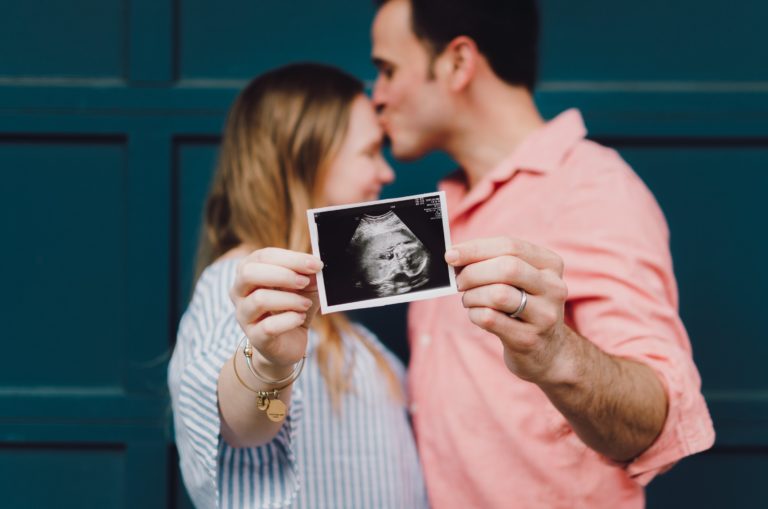
Unfortunately, pathophysiological pregnancy states are also becoming more common. Globally, 10% of women suffer from hypertension in pregnancy [1], and 1 in 7 pregnancies are affected by some form of glucose intolerance [2]. Mothers are older and more overweight prior to pregnancy, with disorders such as diabetes and hypertension, both pre-existing and developing during pregnancy, leading to poorer maternal and fetal outcomes [3, 4].
The human microbiome, the population of microbes occupying various body sites, is known to impact on human health through effects on metabolism, immunity, and hormones [5]. Given the major physiological changes during pregnancy, it would be expected that there will also be significant adaptations of the microbiome.
Pregnancy leads to changes in various anatomical niches and the majority of evidence to date has studied these components individually and in small numbers.
Changes in the Gut Microbiota
Several alterations in the gut microbiota have been associated with pregnancy progression. The gut microbiota is greatly altered: the β-diversity of species increases and the relative abundance of different species changes e.g. increased proportions of Proteobacteria and Actinobacteria [6]. Animal studies suggest physiological alterations in maternal intestinal microbiota facilitate energy extraction from the diet throughout pregnancy, so that extra energy can be stored as fat tissue with no significant increase in dietary caloric intake [6]. Most of these changes are seen in late pregnancy.
Koren et al (2012) found that in the gut microbiome of 15 women with GDM the change in species diversity during pregnancy was not different to controls, nor did their overall gut microbiota differ in composition, although women with GDM showed reduced microbial richness at the end of the first trimester [6]. However, more recent research demonstrated that the gut microbiota of women with gestational diabetes was altered at multiple levels, including phylum and genus levels, when compared to normoglycaemic pregnant women [7]. Interestingly these changes were still present at analysis performed on the same cohort eight months postpartum [7]. Raising the probability that a maternal baseline microbiome signature defined and potentially modified preconception could be beneficial.
Changes in the Oral Microbiota
The oral microbiome shows an overall increase in bacteria, including potentially pathogenic species such as P. gingivalis and A. actinomycetemcomitans [9]. This is of particular interest as prior studies have linked periodontal disease in pregnancy to adverse outcomes [10].
Although not yet specifically studied during pregnancy, extremely relevant to pregnancy and hypertensive disorders of pregnancy are animal and non-pregnant human data suggesting associations between changes in oral and gut microbiota and hypertension [18].
Changes in the Vaginal Microbiota
The vaginal microbiome undergoes an increase in Lactobacillus species (normally the dominant vaginal microbe outside of pregnancy), a significant decrease in overall microbiota diversity and increased stability[8]. Most microbiome pregnancy studies have centred on the vaginal microbiome, with some showing a lack of change in diversity being associated with preterm birth [10].
In contrast to the increasing body of literature about the microbiome changing over the course of pregnancy DiGiulio demonstrated that the microbiome remained remarkably stable in the above mentioned body sites throughout the course of pregnancy and in the year following birth [11].
The Microbiome of the Placenta
The placenta, previously thought to be sterile prior to labour, also has a microbiome, with a similar composition to that of the oral microbiome [12] – which may be relevant given the periodontal disease/adverse pregnancy outcome links. There are differences in the microbiomes of women with complicated versus uncomplicated pregnancies. In a study of the placental microbiome of 42 women, Aagard et al (2014) found that taxa such as Burkholderia were more common in women delivering preterm [12].
Colonisation of the Newborn:
Although previously thought to be sterile, the newborn has evidence of a gut microbiota at birth, with meconium samples having bacterial populations [13]. There is a paucity of data on vertical transmission of microbiota from mothers to infants.
Mode of delivery affects composition of the neonatal and infant microbiomes, with Caesarean-born infants having a gut microbiota similar to the maternal skin and oral microbiome, while vaginally-born infants have a gut microbiota similar to the maternal vaginal microbiome [14, 15]. These differences are less after 4 months, and almost disappear by 12 months, [16] with breastfeeding having more impact on microbiota at 4 and 12 months.
Breast milk oligosaccharides impact the infant gut microbiota, and breast milk composition (leptin, adiponectin, insulin) affects infant gut epithelial integrity and inflammation, [17, 18] suggesting mechanisms by which breastfeeding status and infant microbiome may affect infant health.
What will MothersBabies offer the research world?
Microbiome studies in pregnancy to date have been inadequate: most have focussed on a single microbiome site in the mother and/or infant, or a single time period. Additionally, most studies do not have the microbiome in pregnancy as their primary focus but as an “add-on” to an intervention or cohort study performed for other reasons. The effects on the microbiome of potentially confounding physiological variables (e.g. body composition, blood pressure) and maternal characteristics have also been overlooked.
The paucity of good quality large prospective longitudinal studies related to changes and development of the microbiome from preconception, pregnancy, birth and postpartum states means that a great deal of questions about the role the microbiome plays in pregnancy and early neonatal development remain unanswered.
We therefore propose a comprehensive, longitudinal study of the microbiome in this critical period of the mother and child’s lives starting with preconception microbiome analysis.
We seek to examine whether changes in the composition of the maternal microbiome correlate with the development of abnormal pregnancy physiology and disease processes to a degree that is clinically meaningful and plan for tailored intervention trial based on the ground breaking research that we will discover with the backing of MothersBabies.
References


This website and the information it contains is not intended as a substitute for professional consultation with a qualified practitioner.
© MothersBabies Ltd. View our Terms of Use & Privacy Policy
Search MothersBabies
Looking for something in particular? Find it here using our search query function. Simply type in your keyword and click the icon.
Recent Articles
Join Us